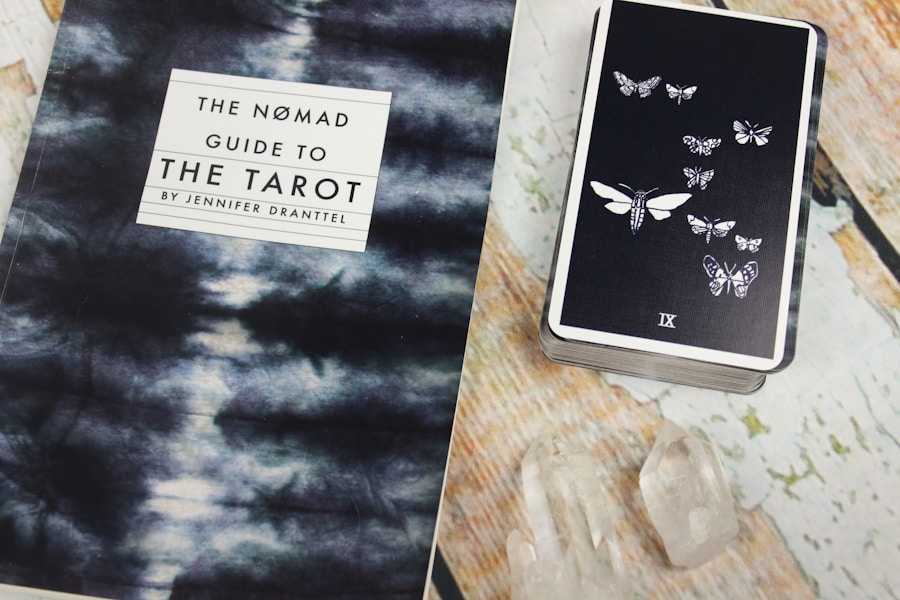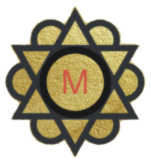
The Tarot deck is a fascinating tool that has captivated the minds of many for centuries. Traditionally, a Tarot deck consists of 78 cards, divided into two main sections: the Major Arcana and the Minor Arcana. The Major Arcana comprises 22 cards, each representing significant life themes, spiritual lessons, and archetypal energies.
Cards such as The Fool, The Magician, and The World are not merely illustrations; they embody profound concepts that resonate with the human experience. Each card in this section tells a story, often reflecting pivotal moments in one’s life journey, and serves as a mirror to our inner selves. In contrast, the Minor Arcana consists of 56 cards divided into four suits: Cups, Pentacles, Swords, and Wands.
Each suit corresponds to different aspects of life—Cups relate to emotions and relationships, Pentacles to material matters and finances, Swords to thoughts and conflicts, and Wands to creativity and action. Within these suits, cards are numbered from Ace to Ten, along with four Court Cards: Page, Knight, Queen, and King. This structure allows for a nuanced exploration of everyday situations and challenges.
The interplay between the Major and Minor Arcana creates a rich tapestry of meanings that can be interpreted in various ways depending on the context of a reading.
Key Takeaways
- The Tarot deck is a tool for self-reflection and insight, consisting of 78 cards divided into major and minor arcana.
- Tarot can be used as a tool for decision making by providing guidance and clarity on different options and potential outcomes.
- Connecting with your intuition is key to interpreting Tarot cards, as it allows for a deeper understanding of the messages they convey.
- Interpreting Tarot card spreads involves considering the symbolism, imagery, and intuition to gain insight into different aspects of life.
- Incorporating Tarot into daily reflection can help in gaining perspective, setting intentions, and gaining insight into daily challenges and opportunities.
- Seeking guidance from Tarot readers can provide additional insight and clarity on specific questions or concerns through their expertise in interpreting the cards.
Using Tarot for Decision Making
Gaining Deeper Understanding
For instance, if someone is contemplating a career change, a Tarot reading can reveal underlying motivations, fears, and potential outcomes associated with each choice. By examining the cards drawn in relation to the question posed, one can gain a deeper understanding of their situation and the energies at play.
Encouraging Introspection
Moreover, Tarot encourages introspection and self-reflection. When interpreting the cards, individuals are prompted to consider their feelings and thoughts about the choices before them. This process can lead to revelations about personal values and desires that may have been overlooked.
Making Informed Decisions
For example, drawing the Two of Swords might indicate a need to confront indecision or internal conflict. This card encourages the querent to weigh their options carefully and consider what truly resonates with their authentic self. By engaging with the Tarot in this way, one can make more informed decisions that align with their true path.
Connecting with Your Intuition

A significant aspect of working with Tarot is developing a connection to one’s intuition. Intuition is often described as an inner knowing or gut feeling that guides us in our lives. When engaging with Tarot cards, it is essential to cultivate this intuitive sense to enhance the reading experience.
Each card carries its own symbolism and meaning; however, personal interpretations can vary widely based on individual experiences and emotions. By tuning into one’s intuition during a reading, deeper insights can emerge that go beyond traditional interpretations. To strengthen this intuitive connection, practitioners often recommend practices such as meditation or journaling before a reading.
Taking time to quiet the mind allows for greater receptivity to intuitive messages. Additionally, when drawing cards, it can be helpful to pay attention to immediate feelings or thoughts that arise upon seeing each card. For instance, if someone draws The High Priestess, they might feel a sense of calm or mystery that prompts them to explore their inner wisdom further.
This instinctual response can guide the interpretation process and lead to more personalized insights.
Interpreting Tarot Card Spreads
The way Tarot cards are laid out—known as spreads—plays a crucial role in how their meanings are interpreted. There are numerous spreads available, each designed for different purposes and questions. A simple three-card spread might represent the past, present, and future concerning a specific issue, while more complex spreads like the Celtic Cross provide a comprehensive overview of various influences affecting a situation.
Each position in a spread has its own significance, which adds layers of meaning to the cards drawn.
If someone draws The Lovers in the first position and The Tower in the second, it may suggest that while they are currently experiencing harmony in relationships (The Lovers), they may soon face unexpected upheaval (The Tower).
This juxtaposition highlights the dynamic nature of life and encourages the querent to prepare for potential shifts while appreciating their current state of balance.
Incorporating Tarot into Daily Reflection
Integrating Tarot into daily reflection can be an enriching practice that fosters personal growth and self-awareness. Many individuals choose to draw a single card each morning as a way to set intentions for the day ahead. This practice not only provides guidance but also encourages mindfulness by prompting individuals to consider how the card’s themes may manifest throughout their daily experiences.
For instance, drawing The Empress might inspire someone to embrace creativity and nurture relationships during their day. Additionally, keeping a Tarot journal can enhance this reflective practice. By documenting daily draws along with thoughts and feelings about each card, individuals can track patterns over time and gain deeper insights into their personal journeys.
This process allows for an exploration of how specific cards resonate with different life phases or challenges faced. Over time, one may notice recurring themes or messages that provide clarity on long-term goals or aspirations.
Seeking Guidance from Tarot Readers

Here is the rewritten text with 3-4 The Value of Professional Tarot Readers
————————————
While many individuals choose to explore Tarot independently, seeking guidance from experienced Tarot readers can offer valuable perspectives and insights. Professional readers often bring years of practice and knowledge to their sessions, allowing them to interpret cards with depth and nuance. They can provide an objective viewpoint that may be difficult for individuals to achieve on their own due to emotional biases or preconceived notions about their situations.
Preparing for a Tarot Reading Session
———————————
When seeking guidance from a Tarot reader, it is essential to approach the session with an open mind and clear intentions. Formulating specific questions can help guide the reading and ensure that the querent receives relevant insights. For example, instead of asking vague questions like “What does my future hold?” it may be more beneficial to ask “What steps can I take to improve my career prospects?” This specificity allows the reader to focus on areas that matter most to the querent while providing actionable advice based on the cards drawn.
Unlocking the Full Potential of Tarot
————————————-
In conclusion, Tarot is not merely a tool for divination; it is a multifaceted practice that encourages self-exploration and personal growth. Whether used for decision-making, connecting with intuition, interpreting spreads, daily reflection, or seeking guidance from professionals, Tarot offers profound insights into our lives and experiences. By engaging with this ancient system thoughtfully and intentionally, individuals can unlock new levels of understanding about themselves and their paths forward.
If you are interested in exploring other forms of spiritual guidance, you may want to check out Deciphering the Messages of Angel Numbers. This article delves into the significance of angel numbers and how they can provide insight and guidance in your life. Just like tarot cards, angel numbers can offer valuable messages to help you navigate life’s crossroads.
FAQs
What is Tarot?
Tarot is a deck of 78 cards that are used for divination, self-reflection, and guidance. Each card has its own imagery and symbolism that can be interpreted in various ways.
How can Tarot be used to navigate life’s crossroads?
Tarot can be used to gain insight and clarity during times of decision-making or uncertainty. The cards can provide guidance, perspective, and potential outcomes to help navigate through life’s crossroads.
Is Tarot a form of fortune-telling?
While some people use Tarot for fortune-telling, it is more commonly used as a tool for self-reflection, personal growth, and gaining insight into a situation.
Do I need to have psychic abilities to use Tarot?
No, anyone can learn to use Tarot. It is a skill that can be developed through study, practice, and intuition.
Can Tarot predict the future?
Tarot does not predict the future with certainty, but it can provide potential outcomes based on the current circumstances and energies surrounding a situation.
How do I choose a Tarot deck?
When choosing a Tarot deck, it is important to select one that resonates with you and feels comfortable to work with. There are many different styles and themes to choose from, so it’s best to find one that speaks to you personally.
Is it necessary to have a specific question in mind when using Tarot?
While it’s not necessary to have a specific question in mind, it can be helpful to focus the reading on a particular area of your life or a specific issue you are facing. This can provide more focused and relevant guidance from the cards.






